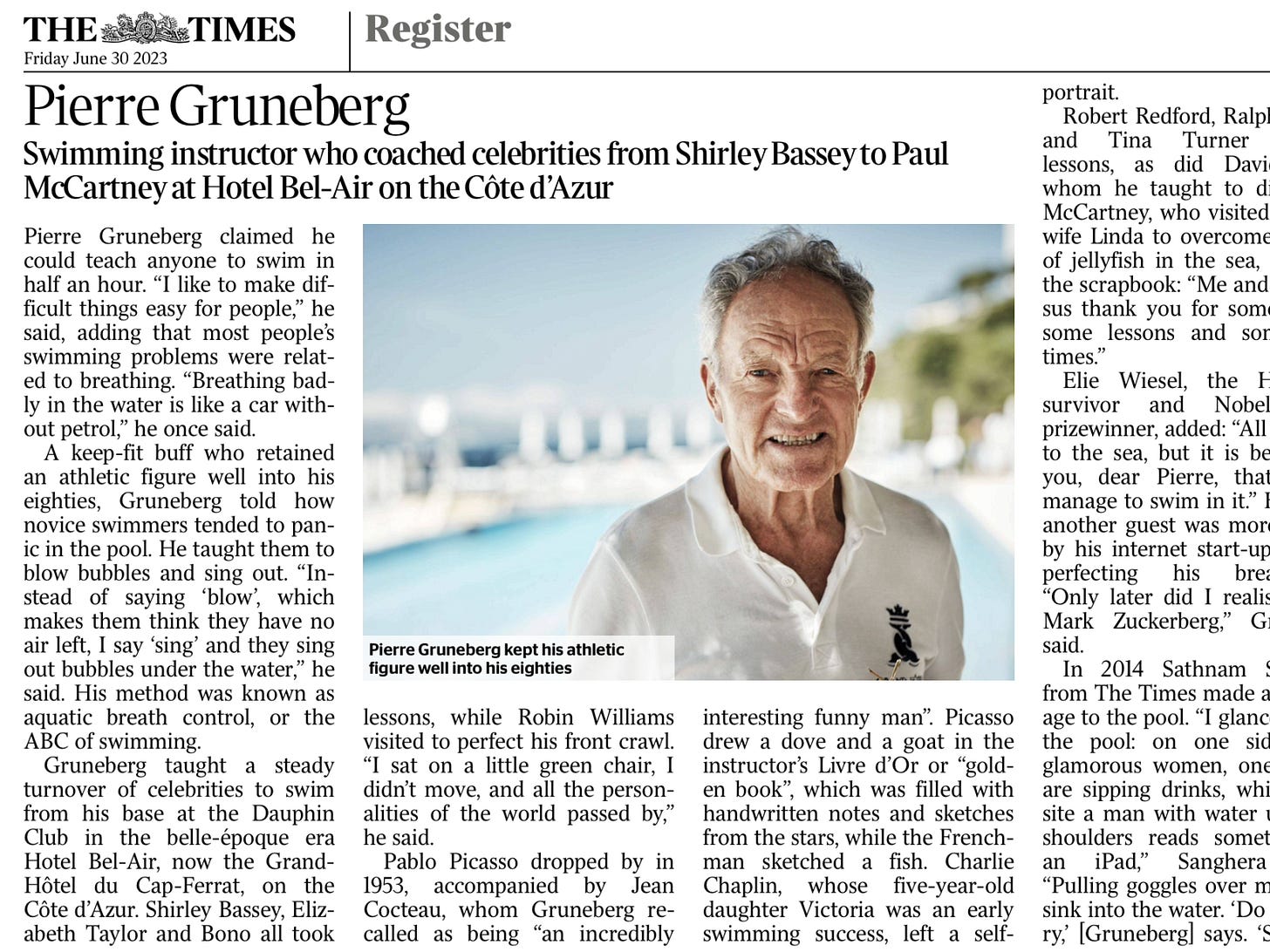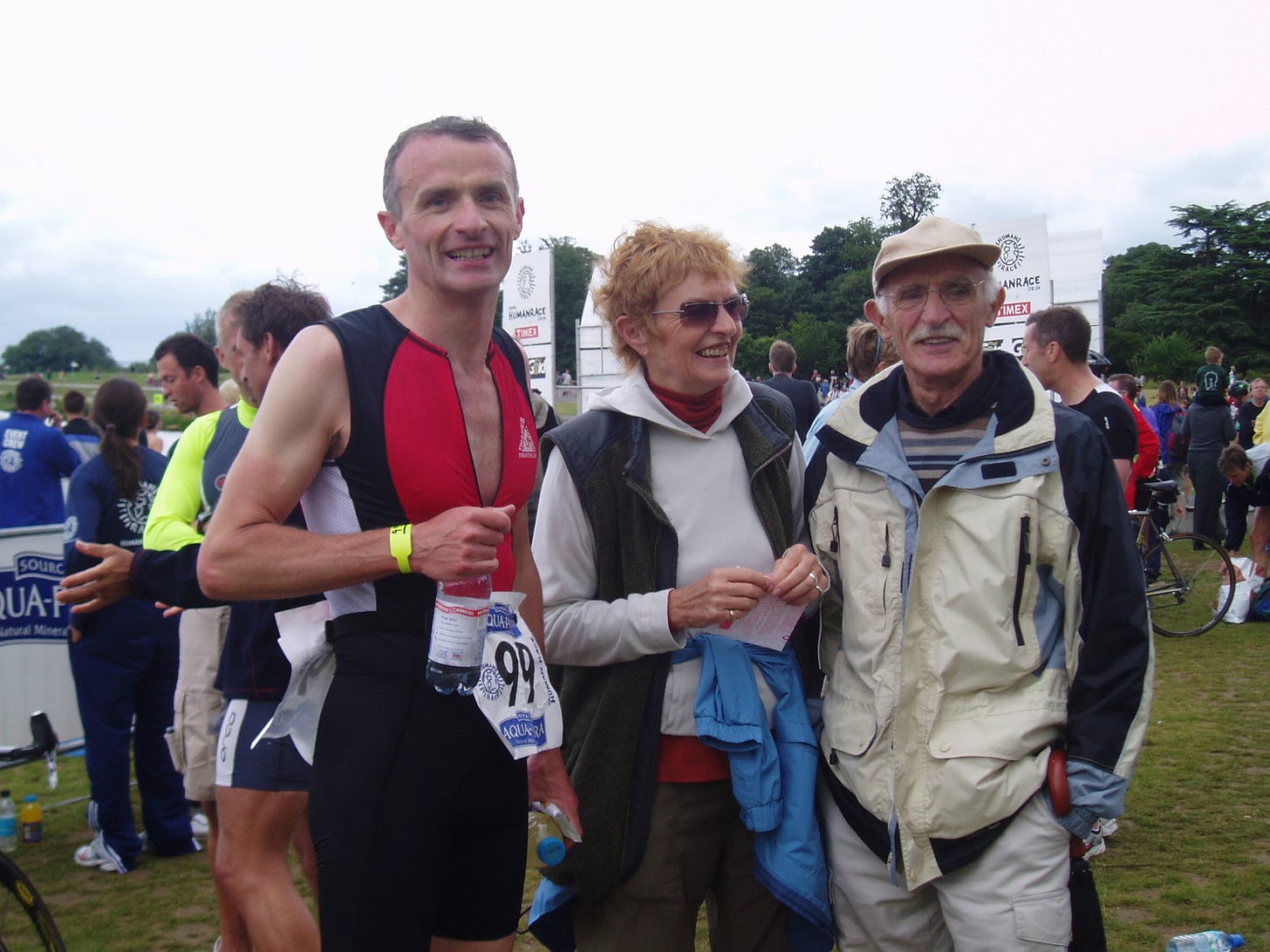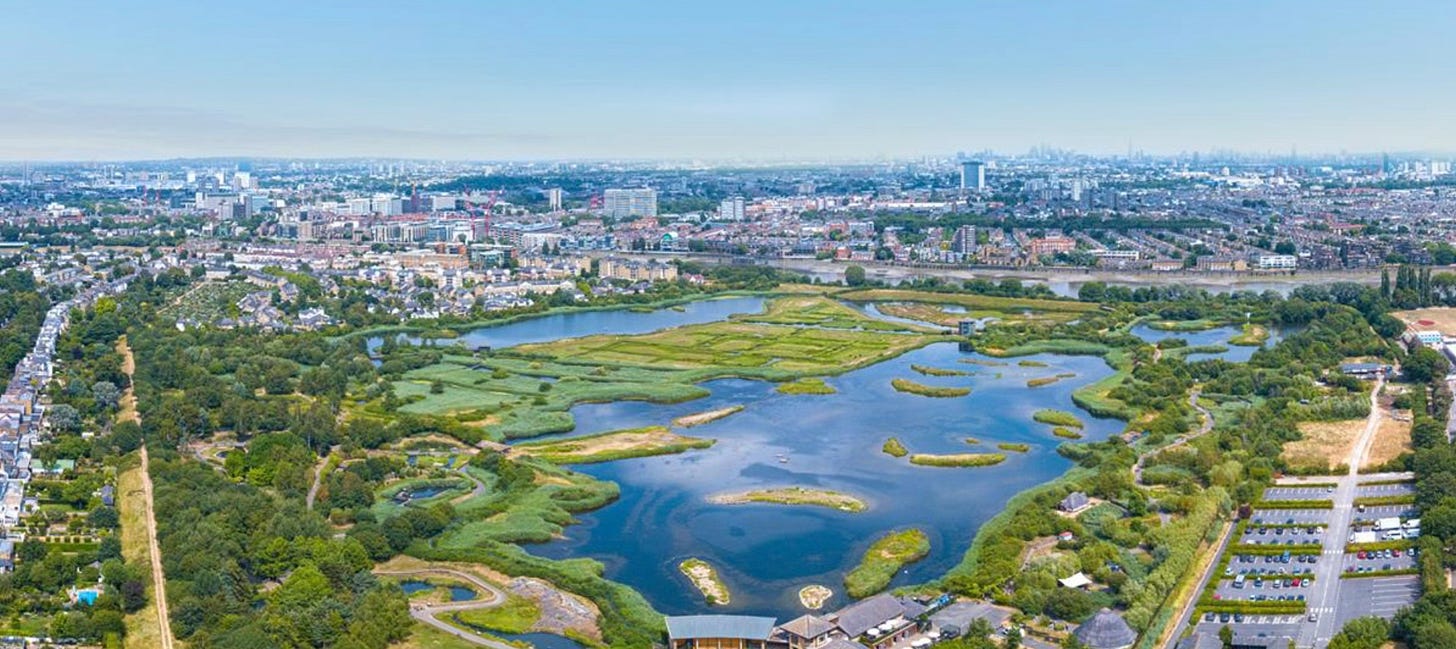How I rewilded my triathlon
Transforming my patch of west London from a treadmill into a nature reserve
20 years ago I took up triathlon.
The original motivation was my boredom with running.
I’d been doing it for decades and I was getting slower and slower.
And to compensate for slowing down, I was running longer and longer.
It was time to change the tune.
A work colleague suggested I get myself a proper road bike which I duly did.
I even started to enjoy it once my perineum had adapted itself to the hard saddle.
Then a friend said I should enter a triathlon as I could now bike and run.
“But I can’t swim”, was my reply. And it was true.
My daughter had nearly drowned me that summer at an outdoor lido in Germany.
Laura had enthusiastically jumped on me for a piggy back in what turned out to be not quite the shallow end of the pool.
I found myself a teacher, Pierre Gruneberg.
At a workshop in a posh hotel outside London he had us sitting at a table, a salad bowl of water before us. He told us to “make a face like a rabbit” and plunge our faces in.
I did and it worked.
I was no longer an aquaphobe. And I could swim with my face in the water.
One of the biggest achievements of my life, in retrospect.
However, it still meant I had to plead with the spectators not to pull me out of the water at my first triathlon, such was their apparent distress at my swimming style.
But I completed it and went on to do quite a few more.
I am eyeballs in now rather than eyeballs out, so to speak.
Training and competing and eventually coaching triathlon meant I spent a lot of time outdoors in nature but I barely noticed any of it at that point in my life.
I have recently returned to some of the most significant places I spent being sporty in and around west London.
I see those landscapes in a different light now.
I am eyeballs in eyeballs in now rather than eyeballs out, so to speak.
You start the triathlon with a swim.
My first full length one was the Windsor Triathlon. That meant my first competitive mile swim was going to be in the River Thames.
I say ‘competitive’ but for me that day it was still just about survival. Survival from being bumped and barged in the water by other swimmers, from serious illness from rat-transmitted Weils disease and from not drowning.
The low water levels in the river that day mitigated those risks to an extent as I could walk a good portion of the swim leg close to the opposite river bank when the referees weren’t looking.
Job done.
Last summer I returned to the Thames but in altogether more relaxed circumstances.
I made the most of a summer’s walk higher up the river at Shiplake to take a dip.
Now that I was more tuned into the nature around me, it was a much more chilled experience.
I took a leisurely breast stroke rather than a frantic front crawl.
According to Roger Deakin, the author of ‘Waterlog’, the book that helped kick start the open water swimming movement at the end of the 20th century:
“Gliding through the water, head up, is the naturalist’s stroke. You see more, placed on equal terms with the animal world around you: the newt, the moorhen and the grass snake.”
That day it was the large colony of greylag geese I could observe who had made that stretch of river their own.
Or the black-headed gull that surveyed me from atop a pile in mid stream.
Once you’ve survived the swim in a triathlon it’s time for the bike leg.
This involves wrestling a wet suit off, finding your bike amidst hundreds of others and jumping onto an absurdly hard saddle in a skimpy lycra jump suit.
My weekly destination for bike training used to be Richmond Park, less than 30 minutes from my then home in west London.
My life was lap after lap of its seven mile road circuit, trying to avoid car drivers irate with you for going faster than they could in the traffic.
And avoiding crashes with fellow MAMILs (middle aged men in lycra), letting off steam with the last hurrahs of their testosterone.
All of a sudden the deer careened across the road in front of us, one of them actually leaping over our heads to safety on the other side of the road.
The occasion that nature got closest to me there, it got far too close.
I was out pedalling round the park with my son when we noticed we were being pursued by a herd of the red deer that live in the park. They had taken fright at a dog chasing them that was off the leash.
All of a sudden the deer careened across the road in front of us at speed, one of them actually leaping over our heads to safety on the other side of the road.
Turns out this wasn’t the first time this had happened in Richmond Park.
In recent months I have returned there but in a far more sedate and less alarming fashion.
I have joined a Friday morning nature walk. It departs from the car park at Penn Ponds, the same gathering point I used for the triathlon group I used to coach.
But that’s where the similarities end.
For one thing my spatial map of the Park has changed completely.
Instead of it being a relentless road circuit without traffic lights to slow you down, it is now 2,500 acres of open space and mature woodlands.
I am now longer on a giant hamster wheel of a racetrack. I am in a National Nature Reserve and it really feels like one.
The final leg of the triathlon is the run.
By the time you’ve swum and biked, whatever the distance, you are running on fumes.
But bizarrely I enjoyed this phase the most. My background was running so I overtook lots of people. Or to be more exact, I would slow down less than them.
Mid career I had two successive employers who were based in Hammersmith on the banks of the Thames. I would often grab a lunchtime to run along its towpath. Either I would turn right at Hammersmith Bridge and a couple miles later cross back over at Barnes Bridge. Or I would turn left as far as Putney Bridge and loop back from there.
I had no idea back then but that route took me past what would become the London Wetland Centre in Barnes.
Previously it had just been four concrete bowls serving as reservoirs for west London.
Now it is the largest inner city nature reserve in the world.
And I am a proud volunteer there, just a few yards from where I used to pound the towpath. I am a ‘guide in the hide’ helping people get the most out of the birdlife there.
I enjoy my nature triathlon now as much as I did my sporting one back in the day.
Each gave me what I needed at each stage of my life, something both similar and different at the same time.
Taking triathlon seriously in my mid years was a reflection of the heady sense of testing out my limits, both as physically as well as in the arena of work.
Now wild swimming in the Thames, rambling round Richmond Park with like-minded souls or greeting visitors at a nature reserve don’t expend the calories or sharpen the competitive edge like before.
But I see now that both are ways of being present in the world, the outdoor world.
Now as then I could feel the wind and rain and sun on my face.
Now as then I know I am truly alive.






Many thanks for posting… it makes me want to get my running shoes on right away.